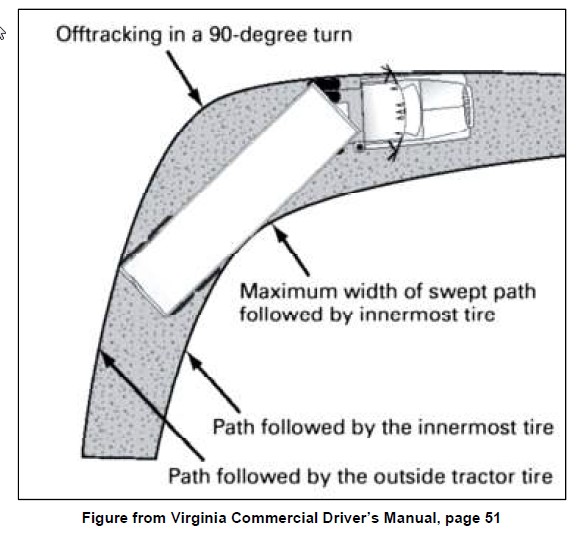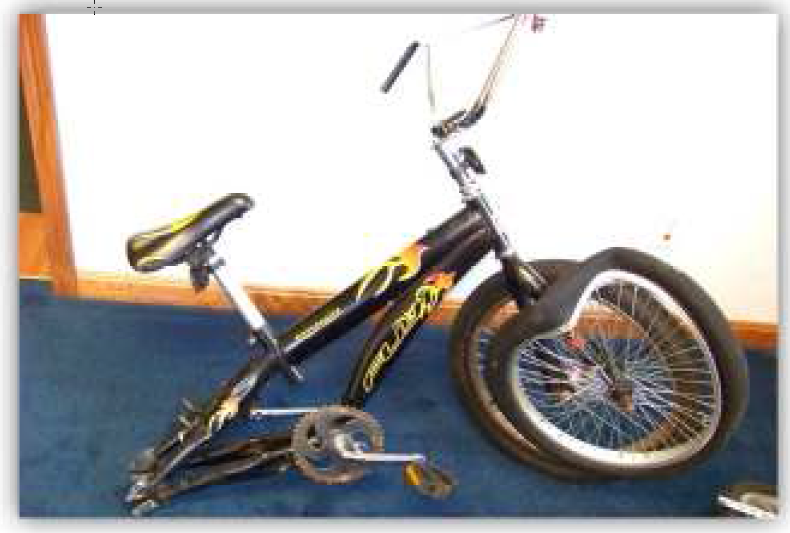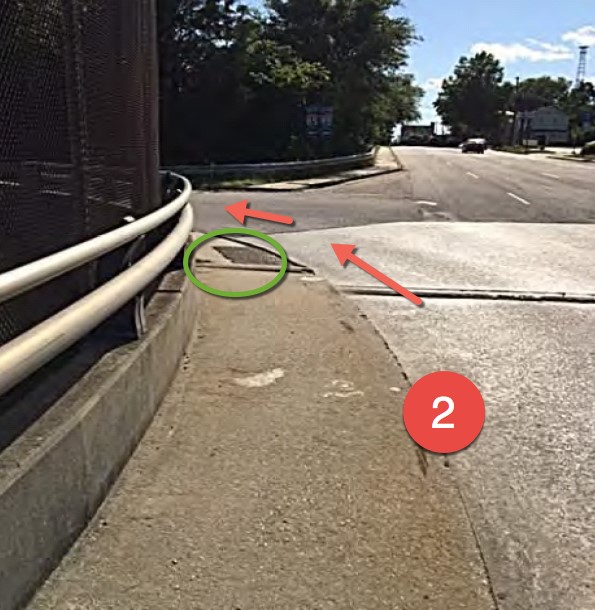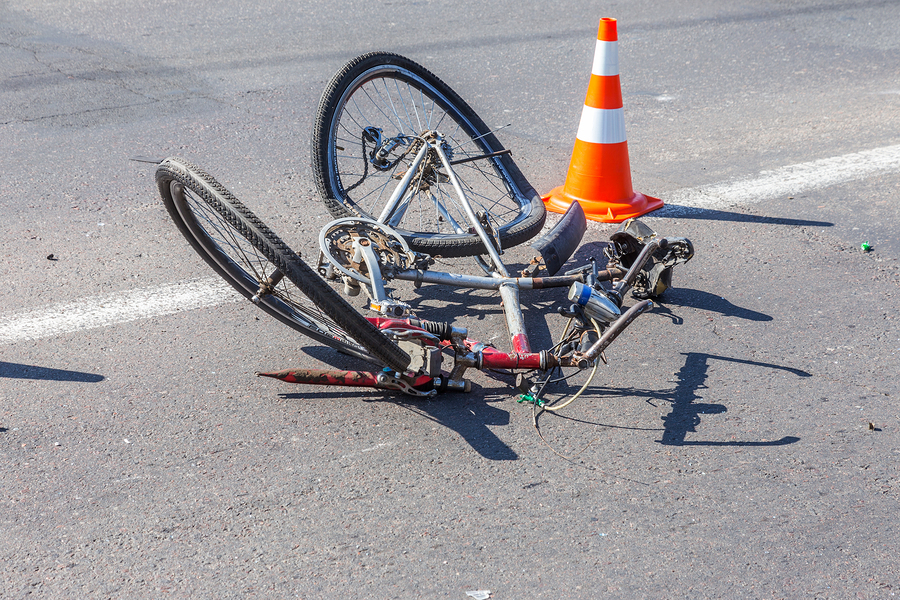What Happened
On May 2, 2017, a clear dry day in Petersburg, Virginia, a high school senior left his high school riding his bike home. He was riding on the shoulder/sidewalk of a one‑way road and needed to cross the 85 interstate entry ramp. He looked over his right shoulder and saw large tractor trailers approaching the entry ramp so he stopped, put his foot down at the edge of the shoulder to wait for the trucks to pass and enter the one lane entry ramp. In this position, he was essentially a pedestrian, with all rights they possess. A tractor trailer driver, who later testified that he saw our client on his bike getting near the end of the elevated sidewalk shoulder, began his left entry turn onto the ramp. The 18-wheeler driver continued onto the ramp and said he never saw the kid on the bike again and didn’t know anything adverse had happened to him, but he had actually sideswiped our client who was violently rolled under the rear left trailer tires and suffered life threatening personal injuries.
 Just a short distance behind the tractor trailer operator was another tractor trailer driver and this eyewitness saw the rear end of the trailer encroach slightly up onto the sidewalk where a portion of the tractor trailer exterior suddenly hit the boy from behind, propelling him into the street where he was then run over by the tandem rear trailer tires. The eyewitness said the tractor trailer driver never stopped and continued onto the interstate but the eyewitness trucker immediately placed his flashers on, jumped out of his semi, and tended to the injured student writhing in pain laying in the street in obvious excruciating pain. Once he did that, the eyewitness truck driver called 911 and tried to reach the tractor trailer driver that had sideswiped the kid on the bike but continued onto I-85. That effort on the CB radio was to no avail but rescue personnel were at the scene within minutes.
Just a short distance behind the tractor trailer operator was another tractor trailer driver and this eyewitness saw the rear end of the trailer encroach slightly up onto the sidewalk where a portion of the tractor trailer exterior suddenly hit the boy from behind, propelling him into the street where he was then run over by the tandem rear trailer tires. The eyewitness said the tractor trailer driver never stopped and continued onto the interstate but the eyewitness trucker immediately placed his flashers on, jumped out of his semi, and tended to the injured student writhing in pain laying in the street in obvious excruciating pain. Once he did that, the eyewitness truck driver called 911 and tried to reach the tractor trailer driver that had sideswiped the kid on the bike but continued onto I-85. That effort on the CB radio was to no avail but rescue personnel were at the scene within minutes.
Related Content
- Read the testimonial from the client involved in this case.
- Learn more about your legal rights after getting injured in a bicycle accident
- What to do if you are hit by a tractor-trailer
- Learn how injured bicyclists can recover medical expense benefits
Our client was air‑lifted to MCV Hospital in Richmond where he was placed in intensive care and underwent multiple orthopedic and internal operations for crush personal injuries, including spinal fixation surgery for fractured lower vertebrae, and internal surgeries because of crush injuries to his urological system. Ultimately, our client underwent numerous surgeries and was released a little over a month later in a wheelchair and then began rehabilitation. He was able to graduate from high school, being released from the hospital in order to attend his graduation in a wheelchair. He was left with a duty to repay $172,000.00 for his MCV care.
KEY LEGAL STRATEGIES
The State Police tracked down the tractor trailer driver through information provided by eyewitness. The tractor trailer driver denied having any awareness of striking our client, and the State trooper decided not to charge the truck driver. We traveled to the scene with a trucking safety expert, and shot the  equivalent of a total station of the entire area so that we could reconstruct the various angles the tractor trailer could have taken in order to encroach onto the pavement of the sidewalk where our client was stationary with his foot down on his bike.
equivalent of a total station of the entire area so that we could reconstruct the various angles the tractor trailer could have taken in order to encroach onto the pavement of the sidewalk where our client was stationary with his foot down on his bike.
Pedestrian Rights Applied
Our client was in the protected status of a pedestrian by virtue of being stationary on the bike. Interestingly the Virginia Code requires that motor vehicle drivers give a 3‑foot cushion around bicyclists who are properly traveling in the highway lane of travel, but there is no Code provision directly providing for any cushion for a pedestrian in a position of safety on a sidewalk, thus common law negligence concepts apply. By analyzing and filming various positions that the tractor trailer driver could have followed, turning onto the entry ramp using, we demonstrated that if a tractor trailer driver did not properly take a wide turn on to the ramp, the trailer of the 18‑wheeler trailer would encroach up to a couple of feet onto the sidewalk rounding the entry ramp.
Commercial Tractor Trailer Responsibilities
Then we looked at the Virginia commercial driving license manual and found a number of drawings and descriptions of how tractor trailer operators should anticipate off‑tracking of a trailer connected to a tractor, which manual explained how drivers should anticipate that trailers will track closer inside a curve, than the tractor will. By the time we took the tractor trailer operator’s deposition in the case, we were able to show various proper turns by other tractor trailer operators, and then show that depending upon how the tractor trailer operator took the entry ramp turn, that his trailer likely encroached onto the sidewalk. This was very powerful during the video deposition of the tractor trailer driver who conceded that his training had involved learning about trailer off‑tracking.
 Also we took the deposition of the eyewitness who indicated that a portion of the trailer had sideswiped the kid on the bike while he was on the sidewalk, in a stopped position.
Also we took the deposition of the eyewitness who indicated that a portion of the trailer had sideswiped the kid on the bike while he was on the sidewalk, in a stopped position.
As for damages, our client had rehabilitated himself very well and was able to walk without the assistance of any devices, but was limited in his job possibilities to sedentary or light-type jobs. His goal during high school had been to enlist in the military but because of his injuries our vocational counselor expert provided the opinion our client would likely never physically qualify for the military. The vocational counselor wrote a report indicating that our client’s lost earning capacity totaled in excess of $400,000.00.
A dispute developed over the total available insurance. The trucking company’s insurance carrier maintained that it only had $1,000,000.00 applicable coverage with no umbrella or excess insurance policy. Our review of the fleet policy indicated that there was a listing of $1,000,000.00 that applied to the tractor and $1,000,000.00 that applied to the trailer but the carrier insisted that the policy’s “other insurance” internal limiting clause stated that no matter how many motor vehicles were listed under the policy, and were involved in any one accident, the maximum payable insurance would be $1,000,000.00 (intra-policy anti-stacking clause). This dispute was never resolved but our client advised us that he was willing to settle for the policy limit offered by the insurance carrier, and therefore we resolved this claim for $1,100,000.00 with $100,000.00 over the tital insurance being payable by the trucking company from its own assets.
The parties utilized the mediation services of a retired Virginia circuit court judge, who worked with the parties toward settlement even after the first mediation had occurred.
RESULTS
$1.1 million settlement (in excess of available insurance) (party names, circuit court withheld under confidentiality agreement).
